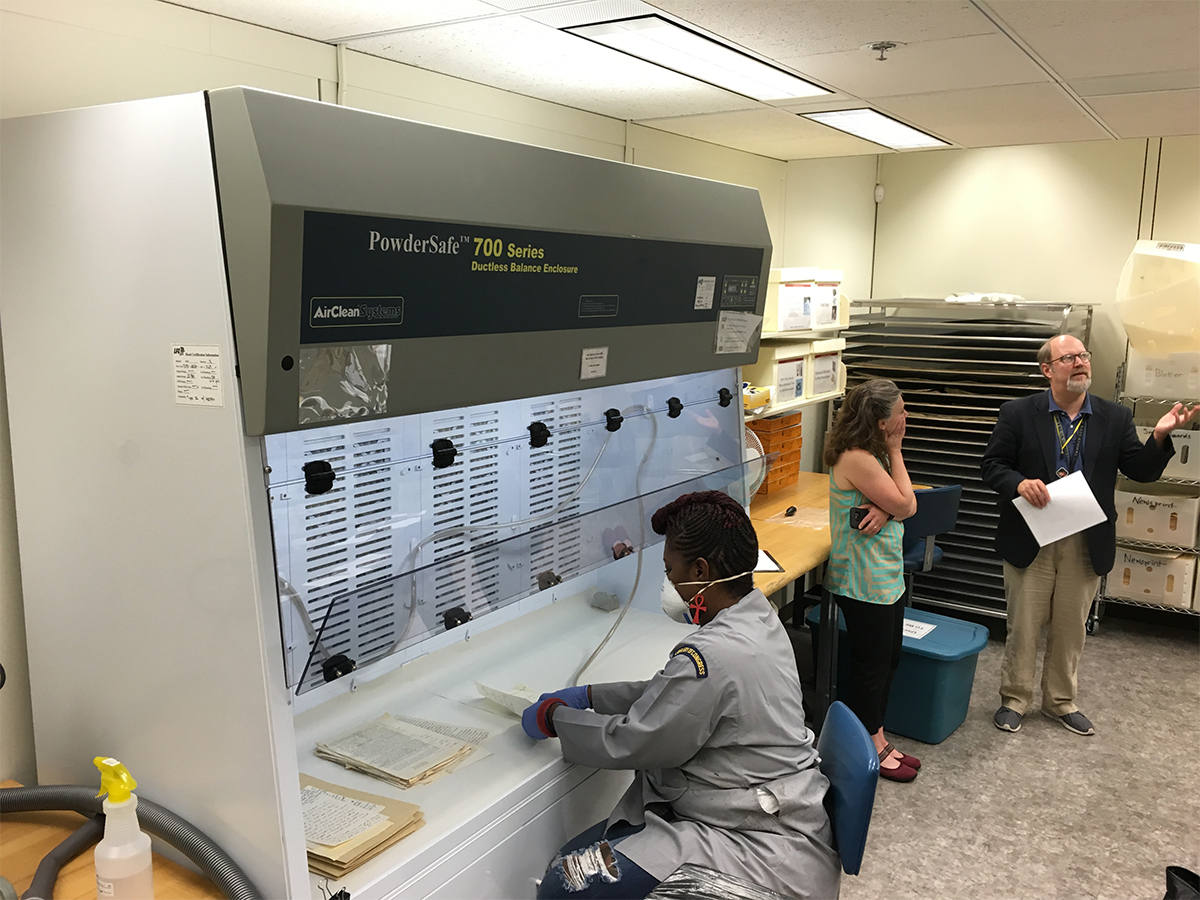The problem of dealing with mold on papers and books in collections has been an ongoing concern of mine for a number of years. I have responded to biological damage on books, manuscript papers, and trade catalogs, but it all began with a water and mold damaged photograph that had weathered both hurricane Katrina, and the irradiation treatment used for decontamination.
At times, the best response that I could muster was to wrap and seal the contaminated items in plastic, and segregate them to prevent further spreading of the spores. As long as the materials were dry, they could remain in storage until there was time and an effective and efficient protocol for dealing with the damage. Recently, I learned that this same practice is used at other institutions when documents are not needed for immediate research. This is because we all have limited resources (mostly the human kind) and limited time.

This June, I spent two weeks in Washington D.C. at the Smithsonian Institute Archives learning the most up-to-date information on handling and treating mold contaminated archival collections. I was able to do this because Hagley is a Smithsonian Affiliate. Under the Smithsonian Affiliations Visiting Professionals Program, staff members from Affiliate organizations can enhance their job skills by working with mentors who have the practical knowledge they seek.
While in Washington D.C., I was hosted by conservator Nora Lockshin. She had arranged tours of the conservation labs of the Library of Congress, National Archives and Records Administration (NARA), and the Maryland State Archives( MdSA). During our visits, we learned how the staff at these institutions responded to water and mold damage and the equipment and procedures that they used.
It was particularly interesting to learn how the Maryland State Archives had dealt with a severe case of flood damaged historic documents. Due to the source of the floodwaters, it was likely that bacterial contaminants were present along with mold. Because of the volume of these papers (record cartons numbering in the hundreds), they determined that gamma irradiation was their best option. In my own experience, gamma irradiation exposure results in brittleness and darkening of paper. This is likely due to overheating during the radiation dose. Others who have seen irradiated mail (from the anthrax scare and subsequent irradiation of U.S. Postal mail in the early 2000s) have documented melted plastics, browned papers, and deteriorated photographs. Those items had dosages that were not directed by conservators, however, and the irradiation of the MdSA’s historic papers seemed to have fared much better. Gamma irradiation is definitely effective for sterilization. The mold swab tests and cultures done by the conservators at MdSA as a monitoring procedure confirmed this. So far, none of the documents that they have attempted to culture contained any viable mold after treatment.
We also met with industrial hygienist Sophia Kapranos of the Smithsonian’s Office of Health, Safety and Environmental Management. She helped sample mold residues on paper items, one with heavy black spots of mold. The method of sampling was a “tape lift”. Using a thin microscope slide covered by a sticky adhesive layer, spore samples were taken by gently placing the slide in contact with an area of mold. The slide was sent for microscopic examination to identify the mold by morphological features and color. Generally the genus, but not the species, may be identified in this way. Tests like this are not readily accessible for all cultural institutions. While it would be nice to know if the type of mold present is one capable of producing mycotoxins, (toxic substances generated by certain molds), it is best to handle all moldy materials with the proper protection to guard against illness. Aspiration of mold particles can cause allergic reactions or respiratory trouble in asthmatics, regardless of whether spores are dormant or non-viable (no longer able to grow). Also, it is important to remember that the even if the mold itself is killed by the gamma irradiation process or other method, the toxins are not destroyed. Therefore, the development and strict implementation of safe work practices is high on my to-do list!
Thanks to the connections I have made and my experience at the Smithsonian, I know where to begin when planning our own segregated mold remediation space.
Laura Wahl is the Library Conservator at the Hagley Museum & Library.
